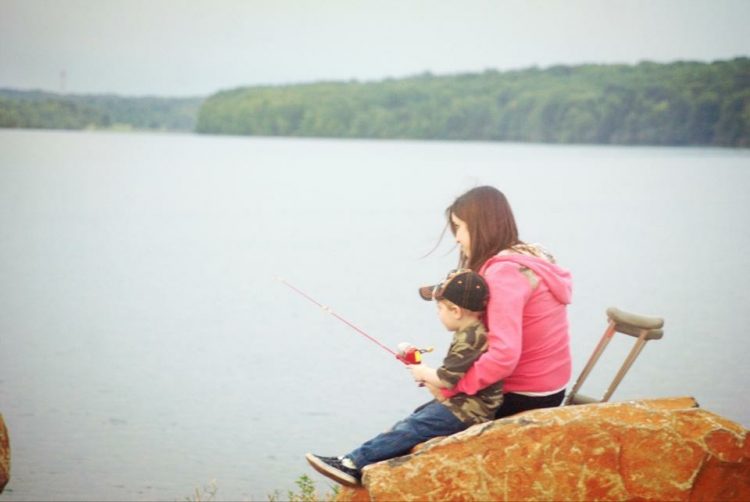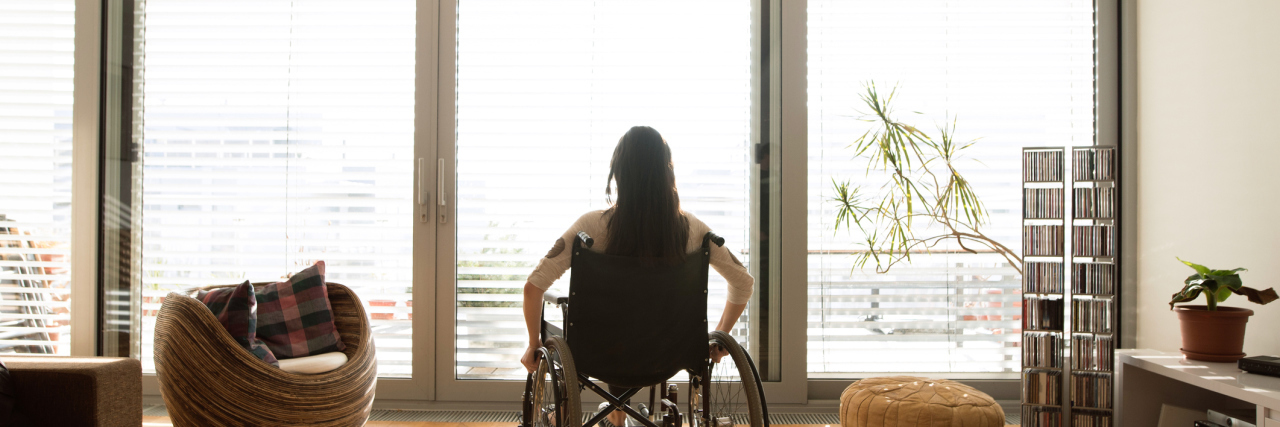Why It Wasn't Easy to Accept My New Identity As Someone With a Disability
In July of 2014, I “lost” my life in a car crash. I lost my life because the person I was would never be seen ever again. The old me was gone. The fit, active, happy lifestyle I once lived was no more. Not only was I forever changed physically, I was changed mentally in ways I never thought was possible. The life I once knew no longer existed.
When you’re first diagnosed with a chronic illness, rare disease, or disability, there is a period of adjustment. There are new physical changes that are now an undeniable part of your life. There are treatments, doctor appointments, and medications. You are more exhausted, whether it is from the side effects of medication, or from the inevitable toll that the disability takes on your body. But perhaps the hardest adjustment is the mental processing as you come to terms with these changes. Obviously the changes to your life are hard to deal with, but the biggest hit is to your identity.
From the start, my surgeons told me I had sustained a very serious injury after the crash. They had told me they hoped I wasn’t an athlete because I would never be able to run again, and walking will always be a challenge. I underwent several surgeries in an attempt to save my right leg. After the crash, my friends and family stayed close to me, trying to keep my mind focused on hope for the future.
Although I was discharged from the hospital with a new physical status, I was the same person otherwise. My emotions were in check. My sense of humor was on point. My confidence was uncompromised. It was a shock to me when the e-mails, texts, and Facebook messages stopped . I watched my friends get together without me. I painfully watched them do the things we loved to do (that I can no longer do) –without me. I watched my job try to replace me. I stopped getting invited to go places. I now felt like I was a burden, and this destroyed me. My memories of those times before my disability brought new meaning to the phrase “the good ol’ days.” I clung to them. They were remnants of the identity I hoped to save.
But the reality is, I had a new identity.
I had to reteach myself many everyday life essentials. I had to learn how to navigate this new world in a wheelchair, walking boot, and crutches. It took me over four months to learn how to walk again. And even when I did learn, it still wasn’t right. I had to reteach myself how to drive. I had to reteach myself how to do simple everyday tasks like going up and down stairs.
My identity has been reduced to account only for my level of physical ability. My personality and sense of humor were only discovered by the few who looked beyond the abnormalities. For the rest, I felt like I was just a disappointing fragment of the woman I used to be. In the beginning, I had not responded well to these challenges. Maybe it was a sense of denial. For the first time, I had finally discovered a weakness in my confidence.
The problem with my identity was that I didn’t have the power to directly control it. For as long as I can remember, I found my self-worth in the people around me, and from the approval of family and friends. As the months wore on following the car crash, I found myself increasingly alone. As the people I used to be close to slipped away, my confidence was broken. My identity was no longer supported, and it collapsed. I no longer knew who I was and I didn’t know what my future held for me. A major part of my new identity is guilt. At home, I feel guilty that the pain and exhaustion requires extra rest and recuperation, which takes precious time away from my family. I feel guilty for the bad mood that can take over me. I feel guilty for no longer taking the extra time to socialize with friends and family. I feel guilt in the workplace. My disability and the side-effects of the cocktail of medications I take causes problems with memory and brain fog, which can pose serious challenges at times on your performance when working.
I’ve spent the last three years convincing myself that I was fighting a war to save my old identity. But now I’m starting to give up on the fight to resurrect a life that vanished long ago. To this day, I am a very avid advocate for my disability and rare disease. I don’t try to hide it anymore and I am able to confidently speak about it with others. I recently realized that I am finally ready to take my first step in a process of change — away from the past, and toward a different path for the future.
I’m a strong woman with a debilitating rare disease, complex regional pain syndrome/ reflex sympathetic dystrophy (CRPS/RSD), along with AVN (avascular necrosis). I’m doing my best to hold down a job and help support my family while coping with the horrible effects that pain and exhaustion can have on my physical and mental well-being. I used to be more active. I used to have a “typical” life. Those who know me now are often surprised at how much I used to be able to do. It isn’t my choice to be less active. It isn’t my choice to be unable to do the things I used to do. My body makes the decisions now. Now, the non-disabled “me” is mere memory. This is who I am now. The old me will never come back, and that’s the reality. It is a harsh reality that I had to accept, whether I liked it or not.
“Acceptance doesn’t mean resignation; it means understanding that something is what it is and that there’s got to be a way through it.” -Michael J. Fox

We want to hear your story. Become a Mighty contributor here.

